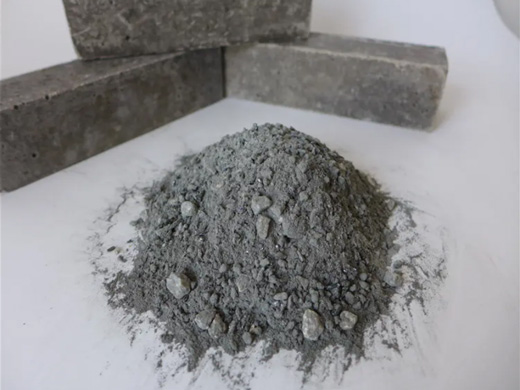News detail
Refractory plastic, classification and application
Refractory plastic is an important amorphous refractory material. The following is a detailed introduction to its performance, classification and application:
Performance
- Plasticity: Refractory plastic has good plasticity within a certain period of time and can be constructed into various shapes by tamping and other methods, which is convenient for repairing and lining complex parts.
- Thermal shock resistance: Compared with sintered refractory products and other amorphous refractory materials of the same material, plastic refractory materials have better thermal shock resistance. This is mainly because aluminum silicate refractory raw materials, as granular and powdery plastic materials, will not produce serious deformation caused by crystal transformation during heating or when used at high temperatures; the mineral composition near the heating surface is fine crystals of mullite and cristobalite, with less glass, and transitions to the low temperature side along the heating surface. The structure and phase of the plastic are gradual rather than drastic; the plastic also has a uniform porous structure, and the expansion coefficient and elastic modulus are generally low.
- Wear resistance: Some refractory plastics have good wear resistance and can withstand the erosion and wear of materials at high temperatures. They are suitable for parts with severe wear, such as the discharge port of cement rotary kilns and the charging port of vertical kilns.
- Bonding strength: It has good medium and high temperature bonding strength. During the heating process, as the temperature rises, moisture escapes and the strength gradually increases. After high-temperature sintering, the cold strength increases.
- Volume stability: Under high temperature conditions, refractory plastics have a certain volume stability, which can prevent excessive deformation and avoid damage to the furnace lining structure, helping to maintain the integrity and stability of the furnace lining.
- Corrosion resistance: It has a certain resistance to corrosion against acids, alkalis, slag, etc., and can maintain good performance in harsh chemical environments. It is suitable for parts in contact with corrosive substances.
Classification
- Classification by refractory aggregate: It can be divided into clay, high-alumina, mullite, corundum, chromium, silicon carbide, zirconium-containing and other refractory plastics. Among them, clay and high-aluminum plastics are widely used, and high-aluminum plastics have relatively higher fire resistance; corundum plastics have higher hardness and wear resistance, and are suitable for high-temperature and severely worn parts; silicon carbide plastics have good thermal conductivity and thermal shock resistance, and are often used in equipment that requires rapid heating or cooling.
- Classification by binder type: including refractory plastics such as aluminum sulfate bonded, phosphoric acid bonded, phosphate bonded, water glass bonded and resin bonded. Phosphoric acid bonded and phosphate bonded plastics have higher strength and better high-temperature performance, and are more commonly used; water glass bonded plastics have a faster strength increase after construction, but care should be taken to prevent the migration of binders during the drying process; resin bonded plastics have better wear resistance and erosion resistance, but the cost is relatively high.
- Classification by hardening method: can be divided into gas-hardening or heat-hardening refractory plastics. Gas-hardening plastics harden at room temperature by absorbing moisture or gases such as carbon dioxide in the air; heat-hardening plastics need to be fully hardened under heating conditions, and have higher strength and better high-temperature performance.

Applications
- Iron and steel industry: In blast furnaces, steelmaking furnaces, converters and other equipment, it is used as a protective material for key parts such as furnace linings, furnace nozzles, and furnace cylinders. It can withstand high temperatures, slag erosion and material erosion, and improve the service life and stability of the equipment.
- Non-ferrous metal smelting: such as aluminum electrolytic cells, copper smelting furnaces, etc., the high temperature resistance and corrosion resistance of plastics enable it to effectively protect the furnace structure and reduce the number of repairs and replacements.
- Petrochemicals: used for the lining of high-temperature equipment such as petroleum cracking furnaces, hydrogenation reactors, catalytic cracking units, etc., which can resist high temperature, high pressure and complex chemical media erosion to ensure the safe operation of the equipment.
- Power industry: In the boiler furnace walls, flues, furnaces and other parts of thermal power plants, as well as related equipment in nuclear power plants, the use of refractory plastics can improve the fire resistance of equipment, prevent the occurrence of fire accidents, and ensure the reliable operation of power facilities.
- Building materials industry: In cement rotary kilns, glass melting furnaces and other building materials production equipment, refractory plastics can be used for lining repair and new construction, and can withstand the wear and high temperature of materials, extending the service life of the equipment.
- Machinery industry: such as various heat treatment furnaces, forging furnaces, etc., the plasticity and good thermal properties of plastics enable them to meet the needs of furnace linings of different shapes and sizes, and provide a stable high-temperature environment for the processing of mechanical parts.


Send inquiry
Please Leave your message you want to know! We will respond to your inquiry within 24 hours!